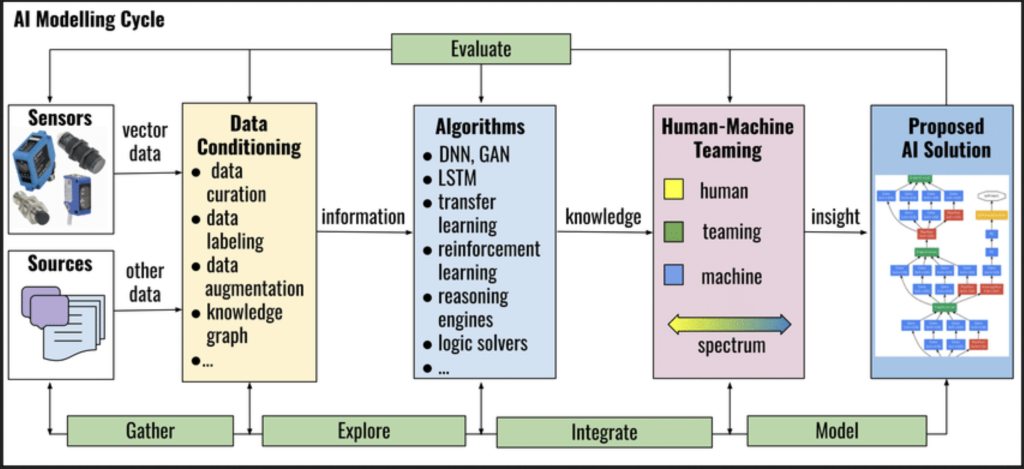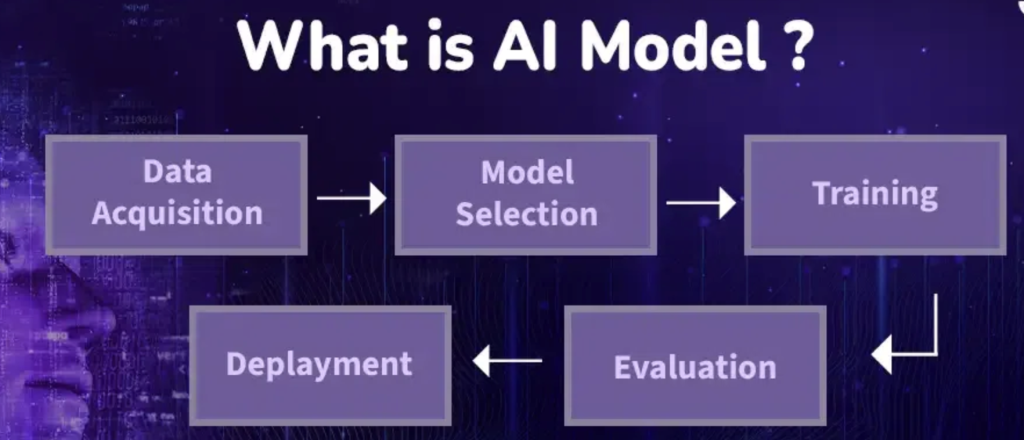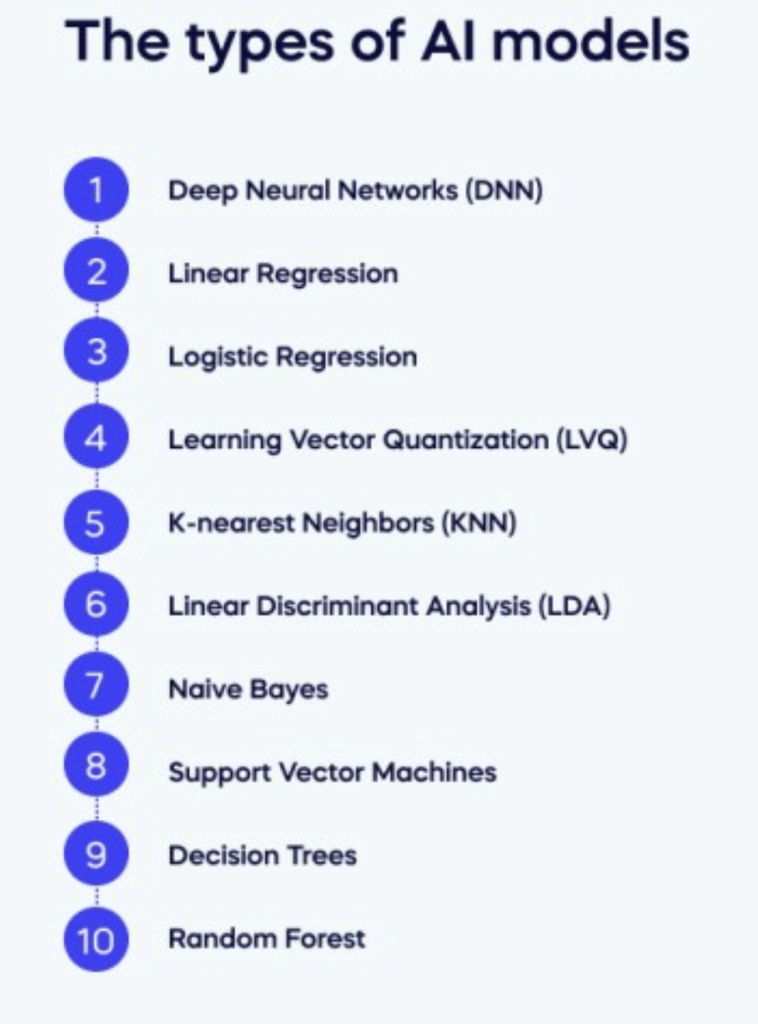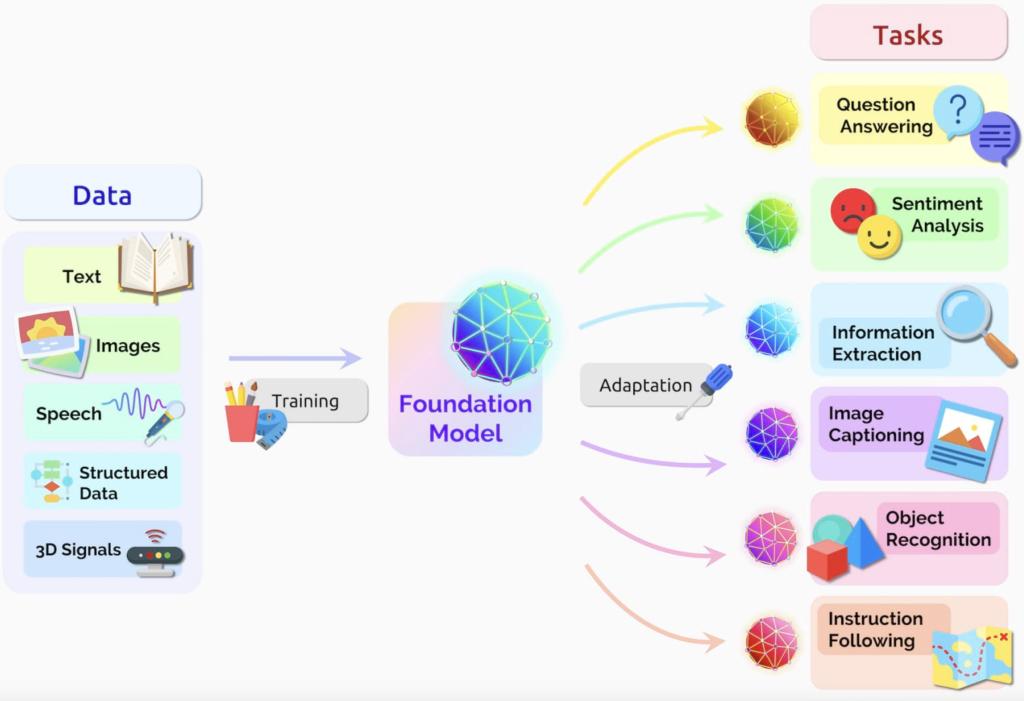
AI models are mathematical algorithms designed to perform tasks that typically require human intelligence. These tasks include understanding natural language, recognizing patterns, making decisions, and solving problems. AI models are the core components of artificial intelligence systems, and they are trained using data to learn and improve their performance over time. Here’s an overview of AI models:


Types of AI Models:
- Supervised Learning Models:
- Linear Regression: Used for predicting continuous values (e.g., predicting house prices).
- Logistic Regression: Used for binary classification tasks (e.g., spam detection).
- Decision Trees: Used for classification and regression tasks.
- Support Vector Machines (SVM): Used for classification and regression tasks.
- Neural Networks: Used for complex tasks in various domains, such as image and speech recognition.
- Unsupervised Learning Models:
- K-Means Clustering: Used for grouping data points into clusters based on similarity.
- Principal Component Analysis (PCA): Used for dimensionality reduction and feature extraction.
- Autoencoders: Used for unsupervised feature learning and anomaly detection.
- Reinforcement Learning Models:
- Q-Learning: Used for learning optimal actions in a given environment to maximize rewards.
- Deep Q-Networks (DQN): Combines Q-learning with deep neural networks for more complex tasks.
- Policy Gradient Methods: Used for learning policies that directly map states to actions.
- Deep Learning Models:
- Convolutional Neural Networks (CNNs): Used for image and video recognition tasks.
- Recurrent Neural Networks (RNNs): Used for sequential data tasks, such as time series analysis and language modeling.
- Transformers: Used for natural language processing tasks, such as language translation and text generation (e.g., GPT models).
- Generative Models:
- Generative Adversarial Networks (GANs): Used for generating realistic data samples, such as images and videos.
- Variational Autoencoders (VAEs): Used for generating new data samples similar to the training data.
How AI Models Work:
- Training:
- AI models are trained on large datasets to learn patterns and relationships within the data.
- During training, the model adjusts its parameters (weights) to minimize the error between its predictions and the actual outcomes.
- Evaluation:
- After training, the model is evaluated on a separate dataset to assess its performance.
- Metrics such as accuracy, precision, recall, and F1-score are used to measure the model’s effectiveness.
- Inference:
- Once trained and evaluated, the AI model can be used to make predictions or decisions on new, unseen data.
- Inference is the process of applying the trained model to real-world tasks.
Applications of AI Models:
- Natural Language Processing (NLP):
- Language translation
- Sentiment analysis
- Text summarization
- Chatbots
- Computer Vision:
- Image classification
- Object detection
- Facial recognition
- Medical image analysis
- Speech Recognition:
- Voice assistants (e.g., Siri, Alexa)
- Transcription services
- Language learning apps
- Recommendation Systems:
- Product recommendations (e.g., Amazon)
- Content recommendations (e.g., Netflix)
- Personalized advertising
- Autonomous Systems:
- Self-driving cars
- Robotics
- Drones
AI models are foundational to the development and deployment of intelligent systems across various industries, driving innovation and enabling new capabilities.
Workflow of AI Foundation Models

I’m a DevOps/SRE/DevSecOps/Cloud Expert passionate about sharing knowledge and experiences. I am working at Cotocus. I blog tech insights at DevOps School, travel stories at Holiday Landmark, stock market tips at Stocks Mantra, health and fitness guidance at My Medic Plus, product reviews at I reviewed , and SEO strategies at Wizbrand.
Do you want to learn Quantum Computing?
Please find my social handles as below;
Rajesh Kumar Personal Website
Rajesh Kumar at YOUTUBE
Rajesh Kumar at INSTAGRAM
Rajesh Kumar at X
Rajesh Kumar at FACEBOOK
Rajesh Kumar at LINKEDIN
Rajesh Kumar at PINTEREST
Rajesh Kumar at QUORA
Rajesh Kumar at WIZBRAND

